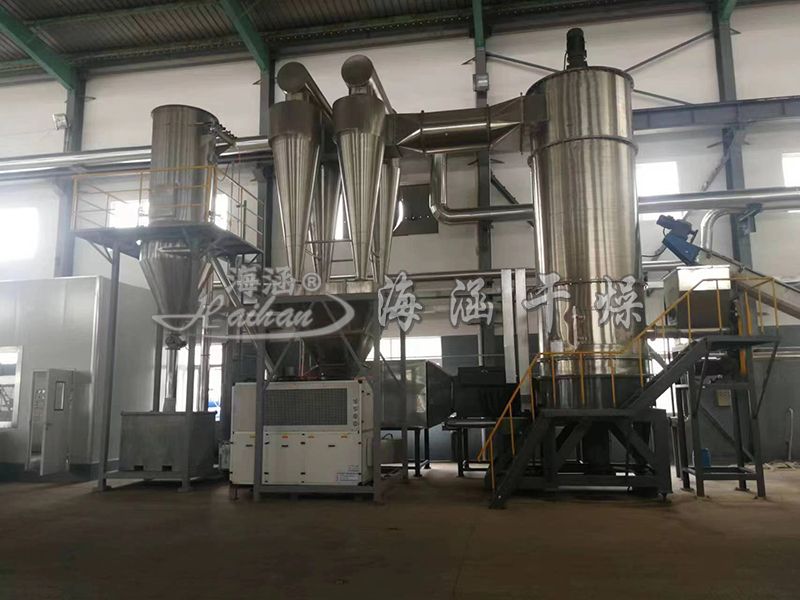Engineering Overview:
Silicon Carbide (SiC) is made from quartz sand, petroleum coke (or coal coke), and wood chips by high-temperature smelting in a resistance furnace. Silicon carbide also exists in nature as the rare mineral, moissanite. Silicon carbide is also known as carbon silica. In the contemporary C, N, B and other non-oxide high-tech refractory raw materials, silicon carbide is a widely used and economical one. It can be called golden steel sand or refractory sand. At present, China's industrial production of silicon carbide is divided into two kinds of black silicon carbide and green silicon carbide, are hexagonal crystals, specific gravity of 3.20 ~ 3.25, microhardness of 2840 ~ 3320kg/mm2.
Equipment Overview:
Silicon carbide drying production line is a new type of high-efficiency fluidised drying equipment developed by our company to overcome the inefficiency and high consumption of static drying. The machine in the design process fully combined with the characteristics of air drying and other fluid drying, to avoid the shortcomings, so that the whole machine has a reasonable process structure and superior performance, and truly achieve the low-consumption, high-efficiency goal of fluidised drying.
This machine has a wide range of applications, can be used for silicon carbide, black silicon carbide, green silicon carbide, black silicon carbide micro-powder, green silicon carbide micro-powder, silicon carbide foam ceramics, refractory materials such as silicon carbide, silicon carbide and other small specific gravity of the fine powder material drying. The equipment has high thermal efficiency, low energy consumption, small footprint, simple configuration and convenient operation and control.
Working principle:
Hot air from the inlet to the bottom of the dryer at the appropriate speed of the jet into the mixing and crushing drying room, the material strong shear, blowing floating, rotating effect, so the material is centrifugal, shear, collision, friction and be particulated, strengthen the mass and heat transfer. At the bottom of the dryer, the larger and wetter particles are mechanically crushed under the action of the stirrer, and the particles with lower moisture content and smaller granularity are entrained by the rotating airflow to rise, and are further dried in the process of rising, due to the rotating flow of gas-solid phase, the inertia of solid phase is larger than that of gas phase, and the relative speed between solid and gas phases is larger, which strengthens the effect of heat transfer between the two phases, and so the drying intensity of the machine is high.
Engineering advantages:
1、Strong professionalism, large capacity, fast drying rate, the material is atomised by the surface area greatly increased, in the vacuum state, the drying time is greatly reduced.
2、Equipment structure is simple, no wearing parts, low maintenance costs.
3、Simple and stable operation, convenient control, intelligent operation can be realised.
4、Using different boiling point temperatures, liquid-liquid separation is achieved.
5、Using special non-standard design atomiser, good atomisation and separation effect.
6、Integrating chemical reaction and drying into one, completing the reaction and drying at one time, optimising the performance of the equipment.
Project picture:





 +86-13906119320
+86-13906119320 


